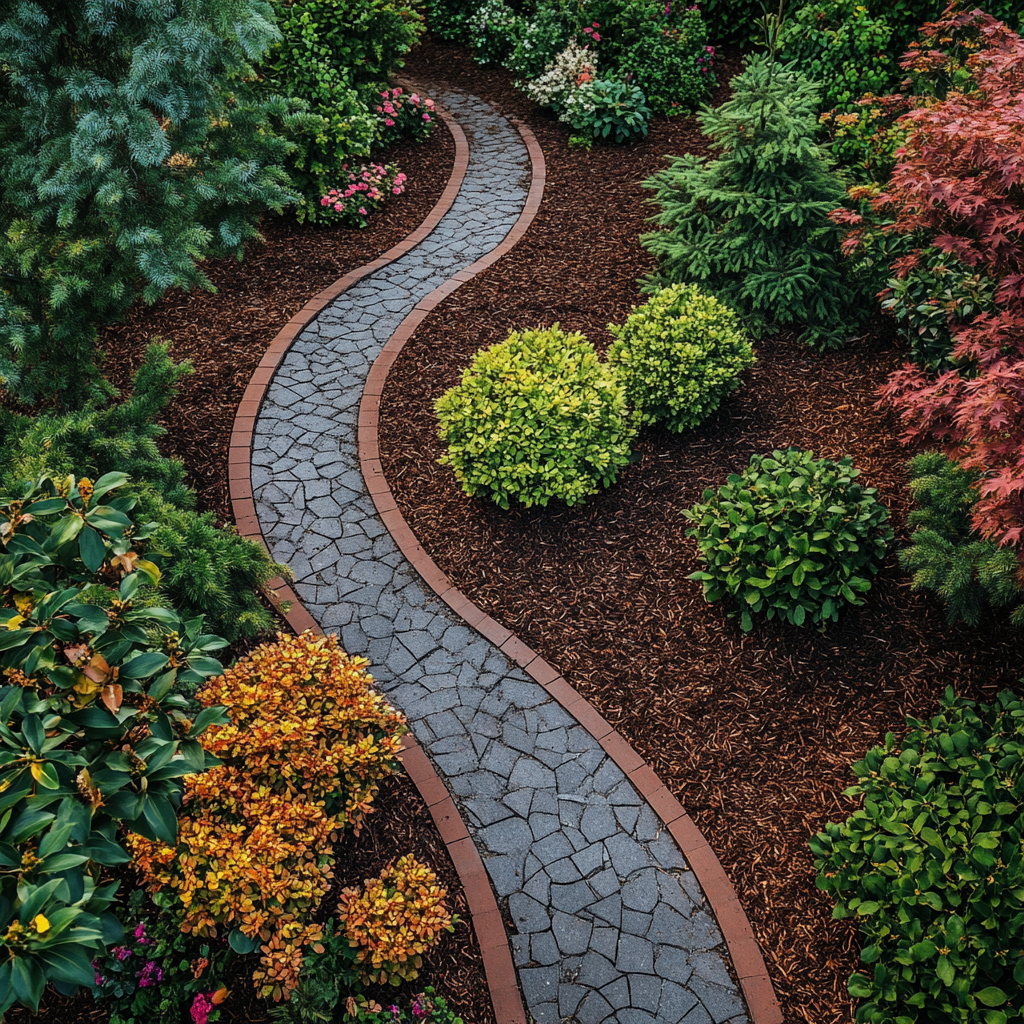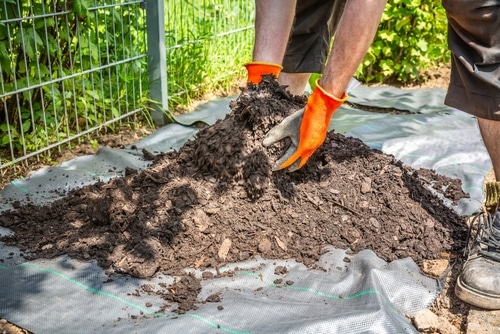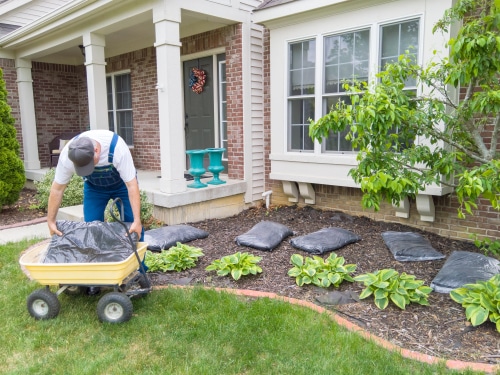Properly applied mulch can transform your garden into a vibrant, well-maintained space while also providing numerous benefits such as moisture retention, weed suppression, and improved soil health. However, determining exactly how much mulch you need for your landscape can be challenging. Applying too little won’t provide the desired benefits, while applying too much can harm your plants. In this comprehensive guide, we’ll walk you through everything you need to know about accurate mulch calculation, ensuring that your garden thrives.
Understanding the Basics of Mulch
Mulch is a layer of material spread over the soil surface to serve several functions. It comes in various forms, including organic options like bark, wood chips, and compost, as well as inorganic choices such as gravel, rubber, and landscape fabric. The primary purpose of mulch is to create a protective barrier that regulates soil temperature, retains moisture, and suppresses weeds, all while enhancing the aesthetic appeal of your landscape.
Benefits of Mulch Application
- Moisture Retention: Mulch helps reduce evaporation, keeping the soil moist for longer periods and reducing the need for frequent watering.
- Weed Suppression: By blocking sunlight, mulch prevents the growth of unwanted weeds.
- Soil Temperature Regulation: It acts as an insulator, protecting plant roots from extreme temperature fluctuations.
- Erosion Control: Mulch prevents soil erosion by reducing the impact of heavy rains.
- Nutrient Enrichment: Organic mulches decompose over time, adding valuable nutrients to the soil.
Types of Mulch and Their Application Rates
The type of mulch you choose affects the amount you’ll need. Different mulches have varying densities and textures, impacting their coverage per cubic yard. Here’s a brief overview of common mulch types and their ideal application rates:
1. Bark Mulch
Bark mulch, available in pine, cedar, and hardwood varieties, is popular for its slow decomposition rate and natural appearance. It’s ideal for flower beds, trees, and shrubs.
- Recommended Depth: 2 to 3 inches.
- Coverage: One cubic yard covers approximately 100 square feet at 3 inches depth.
2. Wood Chips
Wood chips are a versatile and cost-effective option, perfect for garden pathways, playgrounds, and large landscape areas.
- Recommended Depth: 3 to 4 inches.
- Coverage: One cubic yard covers about 80 square feet at 4 inches depth.
3. Compost
Compost is a nutrient-rich mulch that improves soil structure and fertility, making it ideal for vegetable gardens and flower beds.
- Recommended Depth: 1 to 2 inches.
- Coverage: One cubic yard covers around 160 square feet at 2 inches depth.
4. Gravel and Stone Mulch
Gravel and stone are long-lasting mulches suitable for pathways, driveways, and xeriscaping. They provide excellent drainage and are visually appealing.
- Recommended Depth: 2 to 3 inches.
- Coverage: One cubic yard covers about 100 square feet at 3 inches depth.
5. Rubber Mulch
Made from recycled tires, rubber mulch is durable and ideal for playgrounds and sports areas. It doesn’t decompose or attract pests, making it a low-maintenance choice.
- Recommended Depth: 2 to 3 inches.
- Coverage: One cubic yard covers around 130 square feet at 3 inches depth.
Step-by-Step Guide to Calculating Mulch Requirements
Accurately calculating the amount of mulch you need involves a few simple steps. Follow this guide to ensure you purchase the right quantity for your project.
1. Measure the Area
Start by measuring the length and width of the area you want to mulch. For irregularly shaped areas, break them down into smaller sections and measure each one separately.
- Formula for Rectangular or Square Areas:
- Length (feet) × Width (feet) = Area (square feet)
- Formula for Circular Areas:
- 3.14 × Radius (feet)² = Area (square feet)
2. Determine the Desired Depth
The depth of mulch is crucial for its effectiveness. Generally, 2 to 4 inches is ideal for most mulch applications, but this can vary depending on the type of mulch and the specific needs of your garden.
3. Calculate the Total Cubic Yards
Use the following formula to calculate the total cubic yards of mulch required:
- Area (square feet) × Depth (inches) ÷ 324 = Total Cubic Yards Needed
For example, if you have a 500 square foot garden bed and you want to apply 3 inches of mulch, the calculation would be:
- 500 × 3 ÷ 324 = 4.63 cubic yards
4. Use Our Online Mulch Calculators
We offer easy-to-use mulch calculators to simplify this process. Simply enter the dimensions of your garden bed, select your preferred mulch type and depth, and our calculator will instantly provide you with the exact amount of mulch you need. This tool is designed to help you save time and ensure accuracy, so you can focus on enhancing your landscape.
5. Account for Special Considerations
If you’re mulching around trees, avoid piling mulch directly against the trunk to prevent rot. For slopes, consider using a slightly thicker layer of mulch to reduce erosion.
Tips for Effective Mulch Application
Applying mulch correctly is just as important as calculating the right amount. Here are some tips to ensure you get the best results:
1. Prepare the Soil
Remove weeds, debris, and old mulch from the area before applying new mulch. Loosen the soil to allow for better root growth and moisture absorption.
2. Apply Evenly
Spread the mulch evenly across the surface, maintaining the desired depth. Avoid piling mulch too high around plant stems and tree trunks, as this can lead to rot and pest infestations.
3. Maintain Mulch Regularly
Check the mulch layer periodically and replenish it as needed. Organic mulches decompose over time and should be topped up annually to maintain their effectiveness.
4. Consider Seasonal Needs
In colder climates, adding an extra inch of mulch before winter can protect plant roots from freezing temperatures. In spring, rake the mulch to refresh its appearance and improve air circulation.
Common Mistakes to Avoid When Mulching
To maximize the benefits of mulch, it’s important to avoid some common mistakes:
- Over-Mulching: Applying too much mulch can suffocate plant roots, leading to poor growth and root rot. Stick to the recommended depth of 2 to 4 inches.
- Mulching Against Plant Stems: Keep mulch a few inches away from plant stems and tree trunks to prevent disease and pest problems.
- Using the Wrong Mulch: Choose a mulch type that suits the specific needs of your plants and garden design. For example, avoid using dense mulches like gravel in vegetable gardens, as they don’t provide nutrients.
Choosing the Right Mulch for Your Garden
Selecting the right mulch depends on several factors, including your garden’s needs, your budget, and your personal preferences. Here’s a quick guide to help you decide:
1. For Flower Beds and Shrubs
Use bark mulch or compost to enhance soil health and provide a neat appearance. Both types decompose slowly, adding nutrients to the soil over time.
2. For Vegetable Gardens
Compost and straw are excellent choices, as they enrich the soil and provide the ideal environment for vegetable growth.
3. For Pathways and Driveways
Gravel and stone mulches are durable and provide good drainage, making them ideal for high-traffic areas.
4. For Playgrounds and Sports Areas
Rubber mulch offers a safe, long-lasting surface that’s perfect for playgrounds and athletic fields.
Accurately calculating your mulch needs and applying it correctly can greatly enhance the health and beauty of your garden. With this guide, you’re now equipped with all the information you need to make informed decisions and achieve a thriving landscape. Our mulch calculators make it easy to determine the exact amount of mulch needed for any project, ensuring that you get the most out of your investment. Whether you’re looking to improve soil health, suppress weeds, or simply elevate the aesthetic appeal of your garden, the right mulch can make all the difference.



